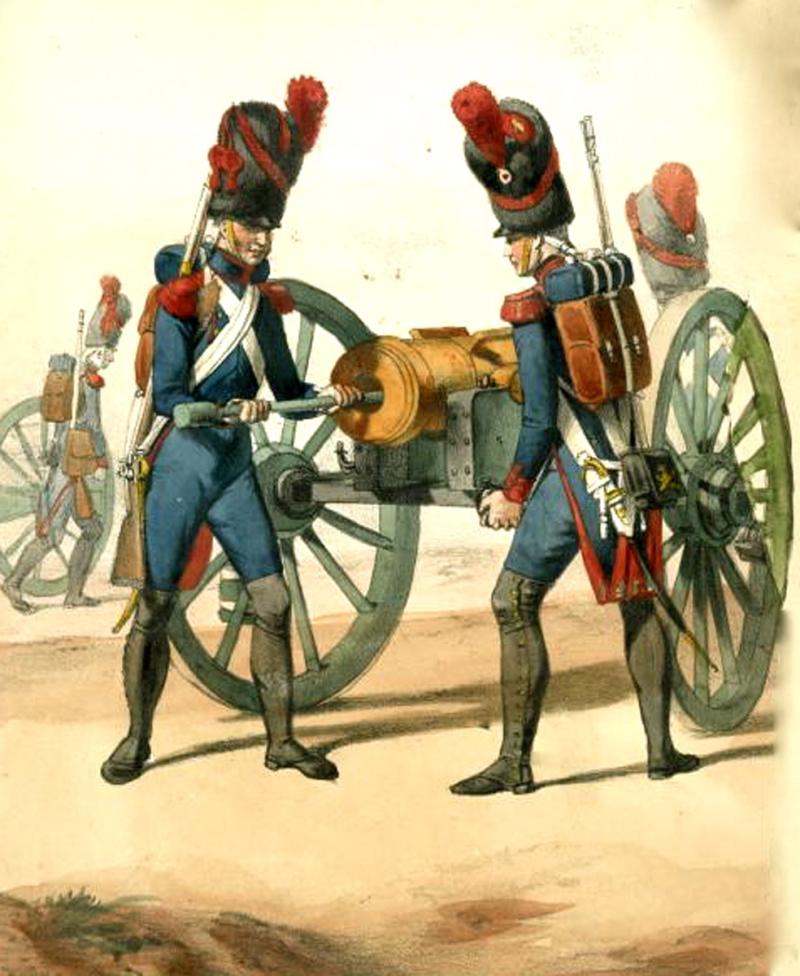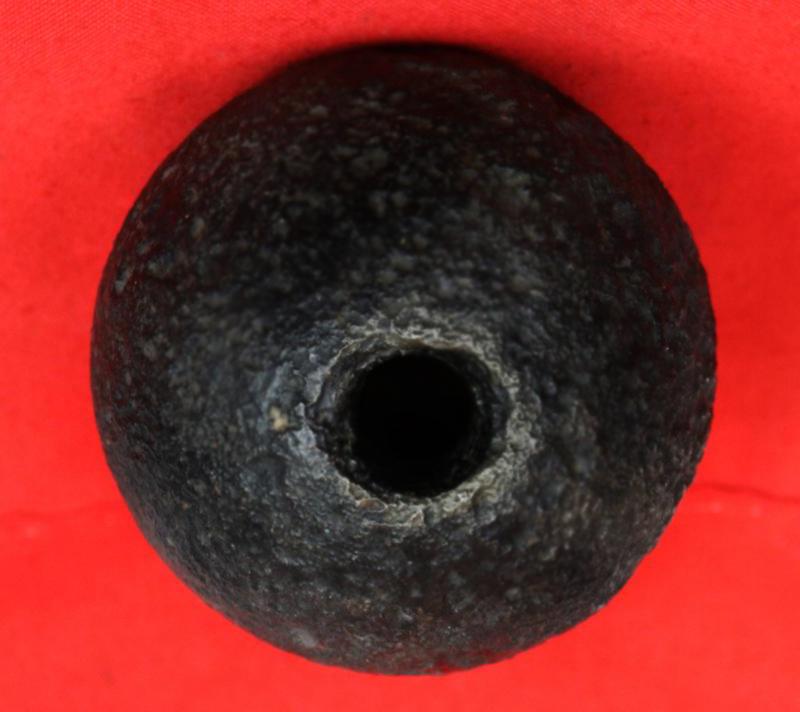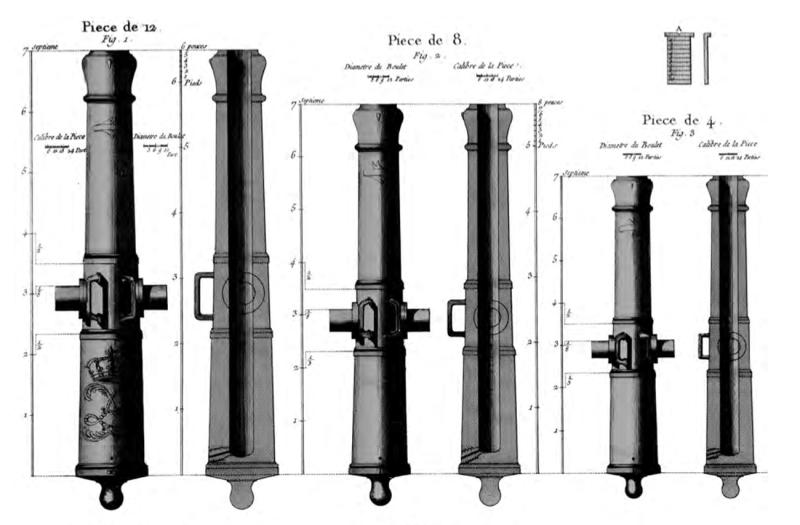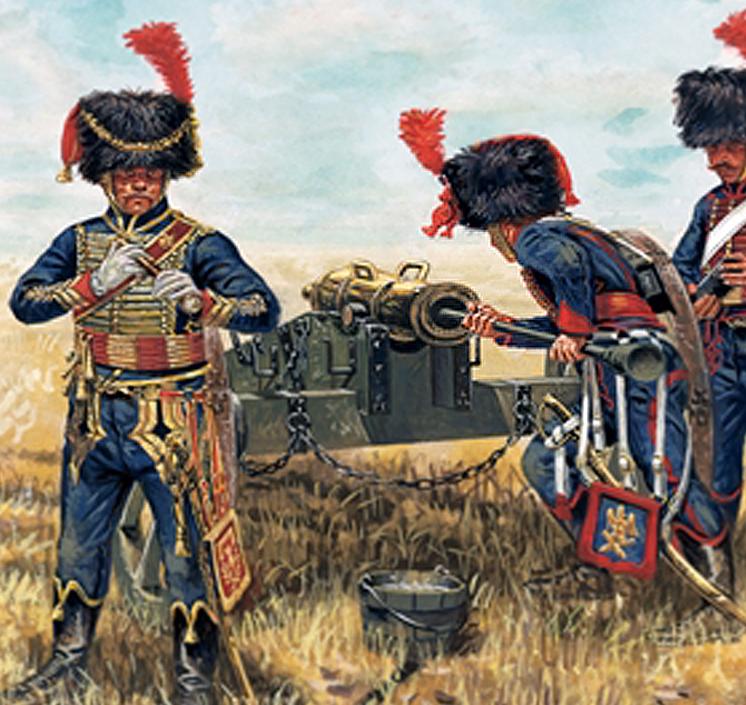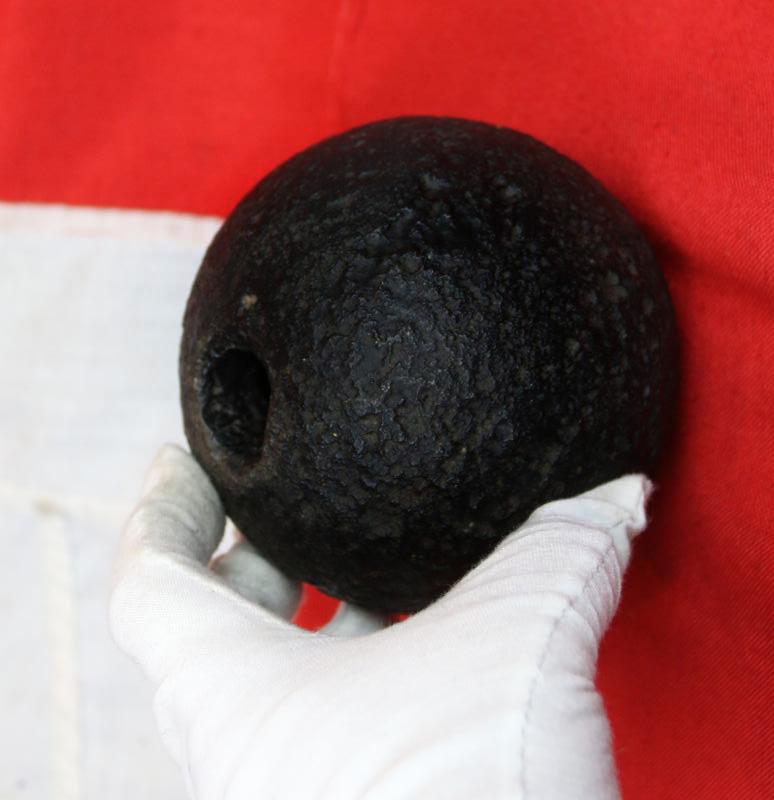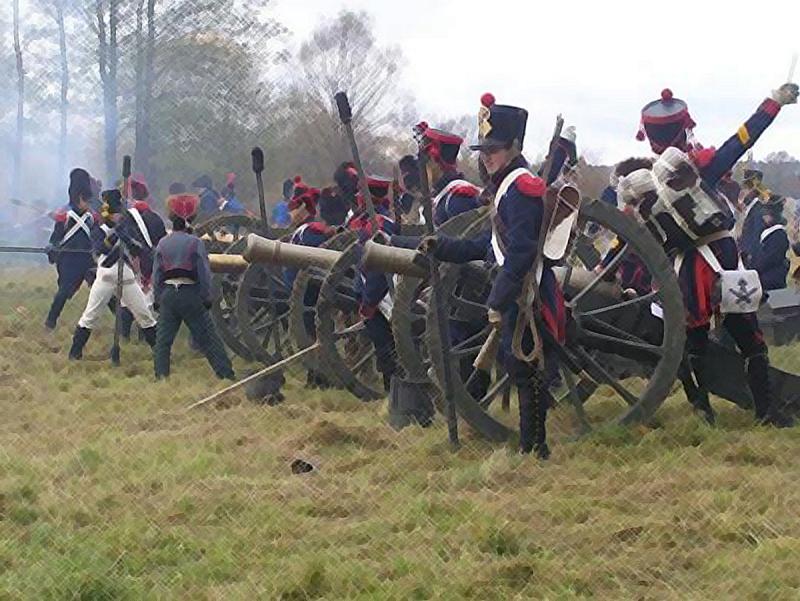A Very Rare Fabulous, Original Battle of Waterloo Recovered 12 Pounder Explosive French 'Gribeauval' Cannon Ball. Fired by What Napoleon Called His "Beautiful Daughters" Likely From The Grand Battery Pounding Mont St Jean
Recovered from the time of excavation of the battle field site of Waterloo for the construction of the 'Waterloo Mound' in the 1820's, constructed to hold the massive lion statue, to commemorate the Prince of Orange's contribution to the battle. The mound is frequently believed to be far more impressive than the prince's actual efforts as the commander of his men during the battle.
Obviously a miss-fired explosive French cannon ball that failed to detonate.
At the Battle of Waterloo in 1815, the French army, under Napoleon's command, utilized the 12-pounder Gribeauval cannon. This cannon, which fired a 12-pound round shot, and explosive ball, was a mainstay of the French artillery and a key component of Napoleon's forces. The Gribeauval system, including the 12-pounder, was known for its lighter weight compared to other artillery of the time, contributing to the French army's mobility.
The 12-pounder Gribeauval cannon was a field artillery piece that fired a 12-pound (approximately 5.4 kg) round shot. It was also capable of firing other projectiles like grapeshot, canister shot, explosive Howitzer type, and later, shells.
Napoleon favoured the Gribeauval system, including the 12-pounder, calling it his "beautiful daughters". He valued its lighter weight, which allowed for greater maneuverability on the battlefield.
Waterloo Deployment:
At Waterloo, the French artillery, including the 12-pounders, played a significant role, though the battle's outcome was ultimately determined by other factors. While the exact number of 12-pounders deployed at Waterloo is debated, historical accounts mention batteries of 12-pounders being used to bombard Wellington's lines.
British 12-pounders:
It's also worth noting that the British, under Wellington's command, also used 12-pounder guns, although they were heavier than the French Gribeauval system.
The battle involved a significant amount of artillery fire from both sides. Solid shot, like that fired from the 12-pounders, was a powerful weapon capable of inflicting serious damage on troops and fortifications,
We know from his Memoirs that Napoleon ordered at 11am that the 12-pounder batteries of II and VI Corps would mass with that of the I Corps, that these 24 guns would bombard the troops holding Mont St Jean and that Comte d’Erlon would commence the attack, by first launching his left division, and when necessary, supporting it by the other divisions of the I Corps. Now, this established a battery of 18 x 12 pounders and 6 x 6 inch howitzers to batter Wellington’s line in advance of Mont St Jean.
Empty safe and inert.
Code: 25842
695.00 GBP

